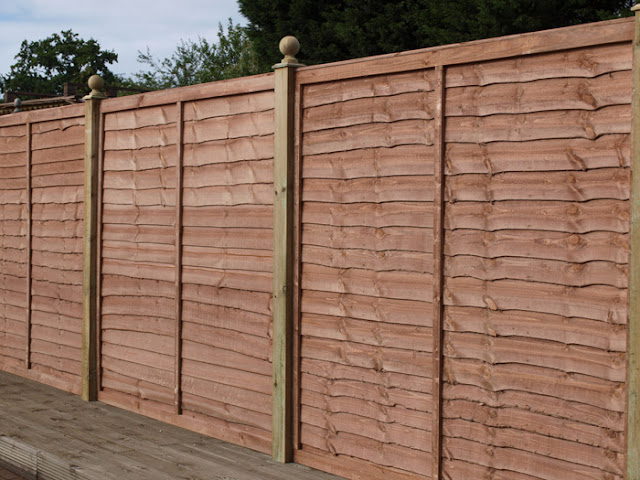Process to put up lap fencing in Hull
Fencing is preferred among the individuals in the UK as it offers privacy from the neighbours and assures of more protection for your premises. A wooden lap fencing in Hull is among the most popular kinds of boundaries.
Installing a wooden lap fence is a popular way to
make your garden look elegant. It also helps to transform the existing fence into
a contemporary one. It is smart work to call the experts and get the service
done. You alone can also perform the task with proper safety tips.
Before you begin:
Lap fencing is attractive, rustic, and trustworthy.
Homeowners prefer lap fencing to put a perfect security to the garden. The
range differs depending on the height and size of your property. If you are thinking
of installing lap fencing, there are some necessary checks that you need to go
through.
·
Discuss the plans with the neighbours
·
Check the exact line of the boundary
·
Confirm that the fence is yours
·
Make a proper planning
Let’s begin:
1.
French panels
2.
French posts
3.
Tape measure
4.
String
5.
Claw hammer
6.
Varnish brush
7.
Weed killer
8.
Screwdriver
9.
Wood preserver
10.
Hammer
11.
Spirit level
Time it may need:
The time taken to accomplish lap fencing really
depends on the condition of the ground and the time taken for digging the holes
for the posts. If the condition of the ground is smooth then, two people will
be able to put 8 panels in 8 hours a day. It may take a longer time to dig if
the ground is harder.
Step 1: Choose the
right type of fence. There is an array of range from where you can choose the
exact size and design of your fencing. There are basically three types of
fencing in UK,
· Close board fencing
(made up of overlapping vertical boards made of timber)
· Overlap fencing (made
of horizontal boards of timber)
· Picket fencing (to
give a stylish look to your garden)
· Trellis (used as a
decorative panel on the top of the solid fencing)
Step 2: Choose the
right fence posts. Decide whether you will set them in concrete or use as post
support. Concrete posts provide a good strong fence whereas wooden posts look
beautiful but they possess a risk of getting rot.
Step 3: Calculate the
length of the area where fencing will be done and also measure the number of
panels.
Step 4: Clear away
the area with the help of a weed killer where fencing will be done. Cut away
all the climbing plants or dense grasses and make the area easy to access.
Step 5: If you are
preferring a wooden post then the holes should be dug at least two feet deep.
Take the boundary string as the guide and dig holes at both the ends.
Step 6: If you are
using a wooden post then you have to set a concrete around them so that the
posts are able to hold in place. It is not required for steel support. You can
mix your own concrete and with the help of a trowel, slope the concrete away
from the post and let the water run-off. Leave it to harden for at least a couple
of hours before attaching the panels.
Step 7: Add treated
gravel boards to keep the fencing panels off the ground and also to prevent
them from rotting. Screw the panels to the posts using post clips per post. It
is recommended to use stainless steel screws.
Step 8: Keep the
panels horizontally. If there is any gap, fill it accordingly. This will help
to make the fence look natural and beautiful.
Your lap fencing in Hull is an integral part
of your garden design. If it is installed and maintained properly, then it may
last for several years. The best time to put a garden fence is early summer or
autumn. You can also hire experts to get the things done in Hull.





Comments
Post a Comment